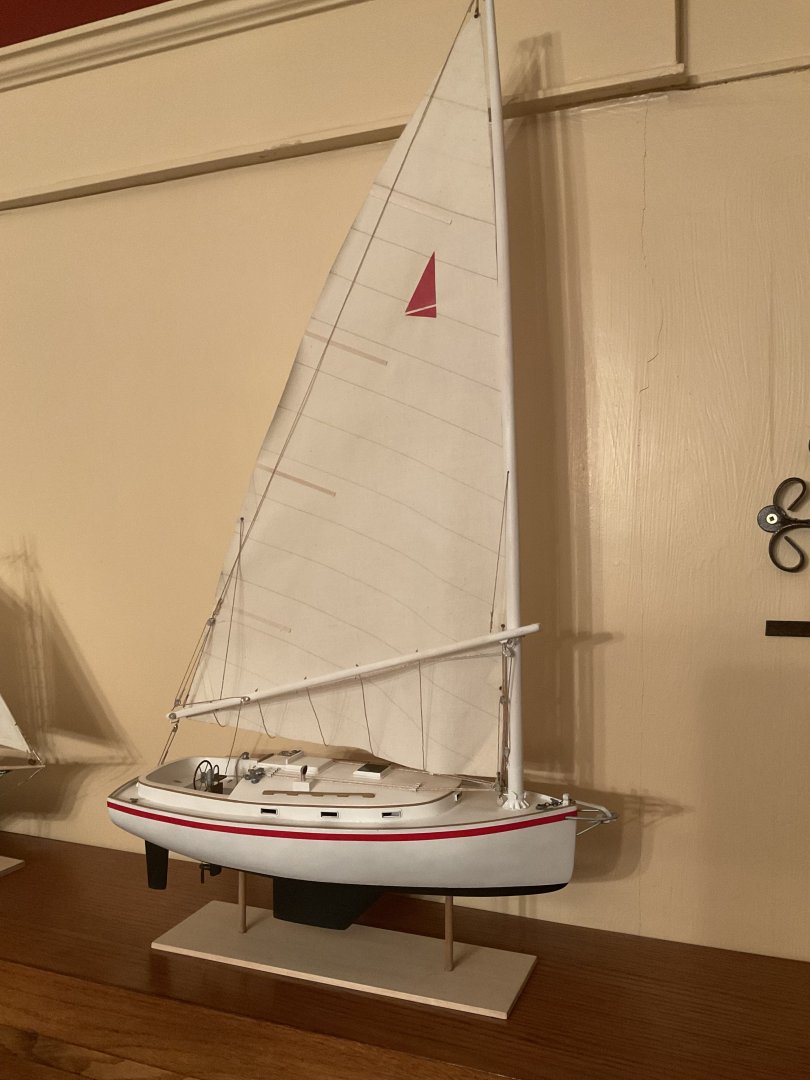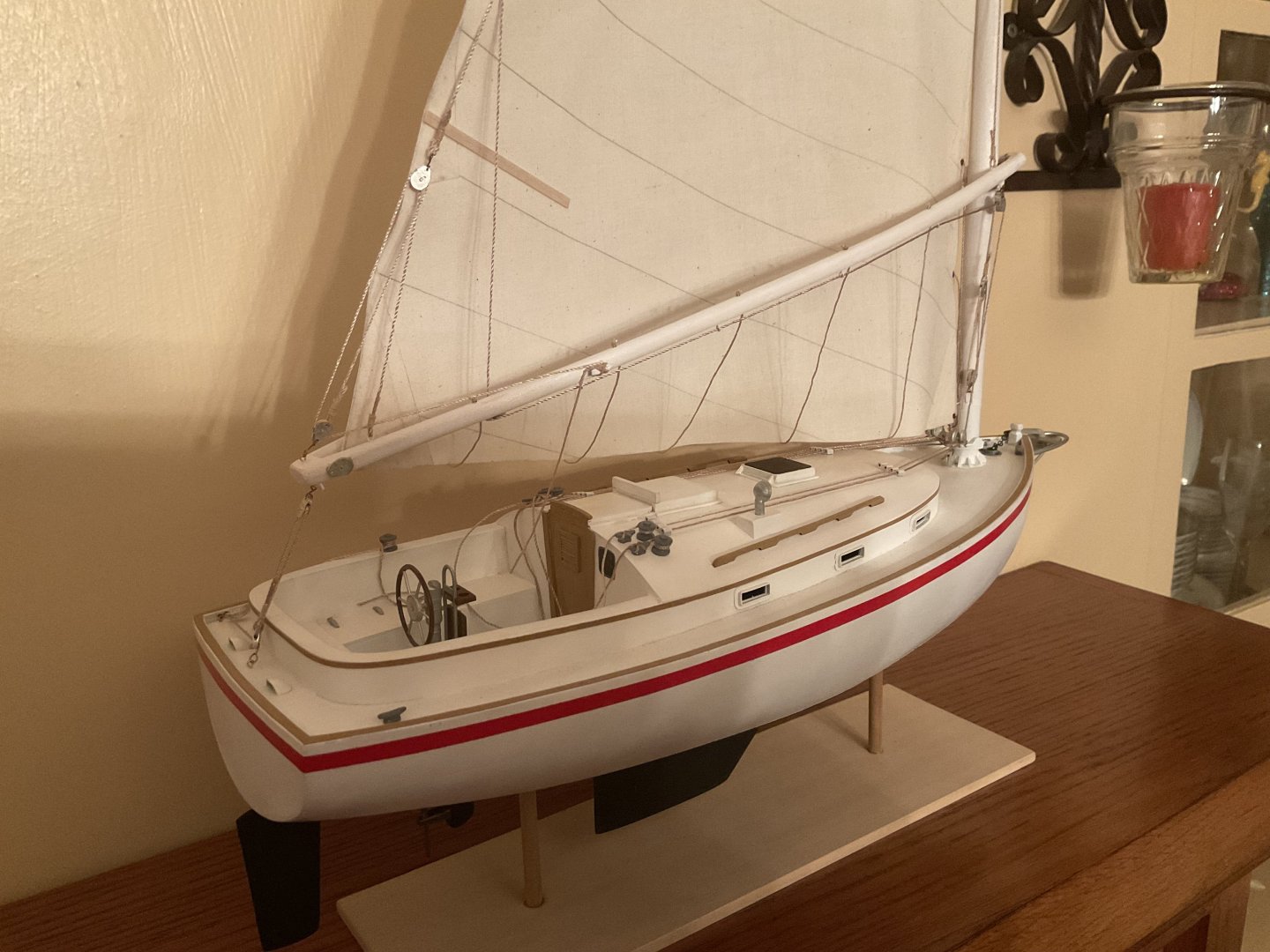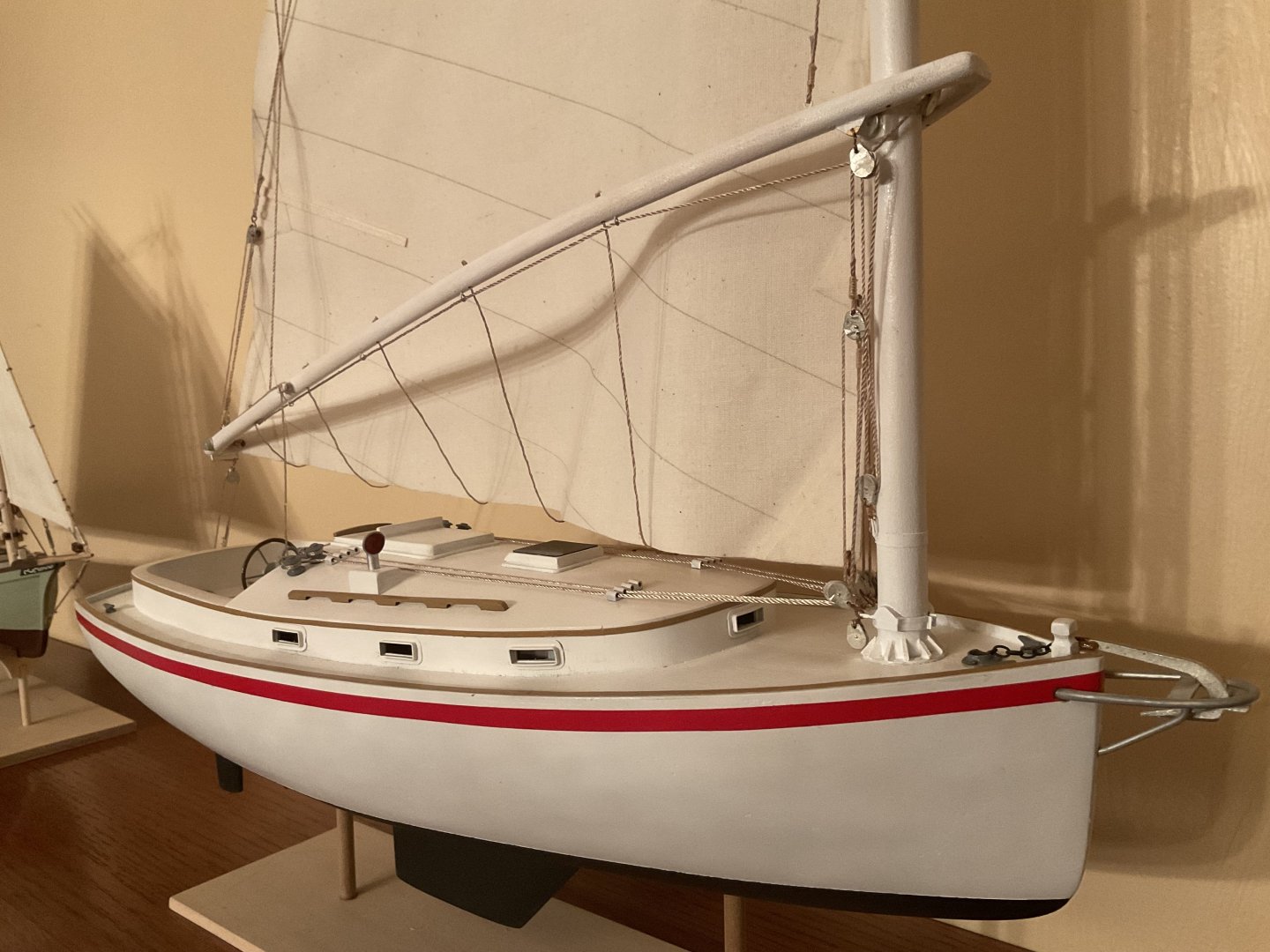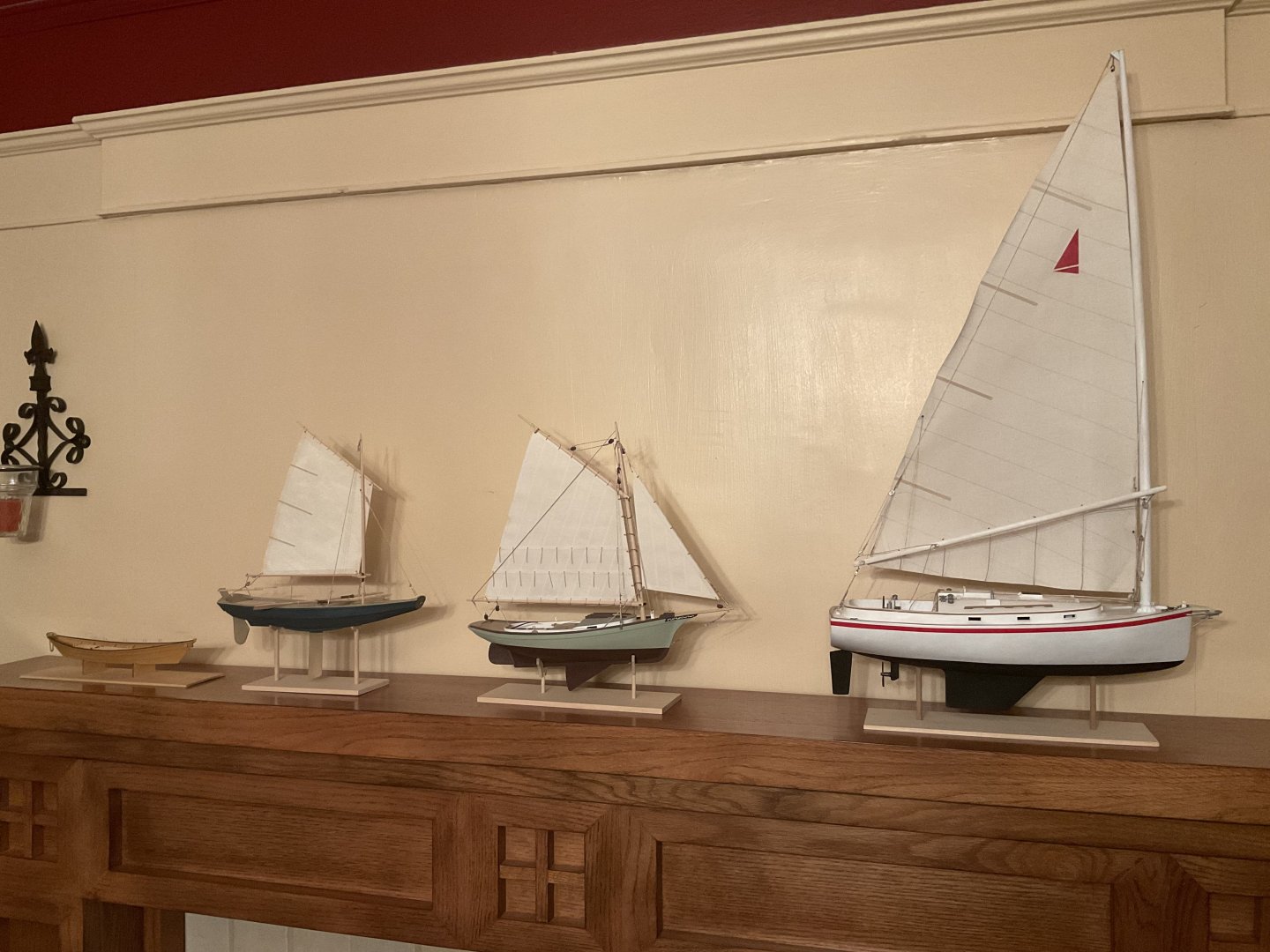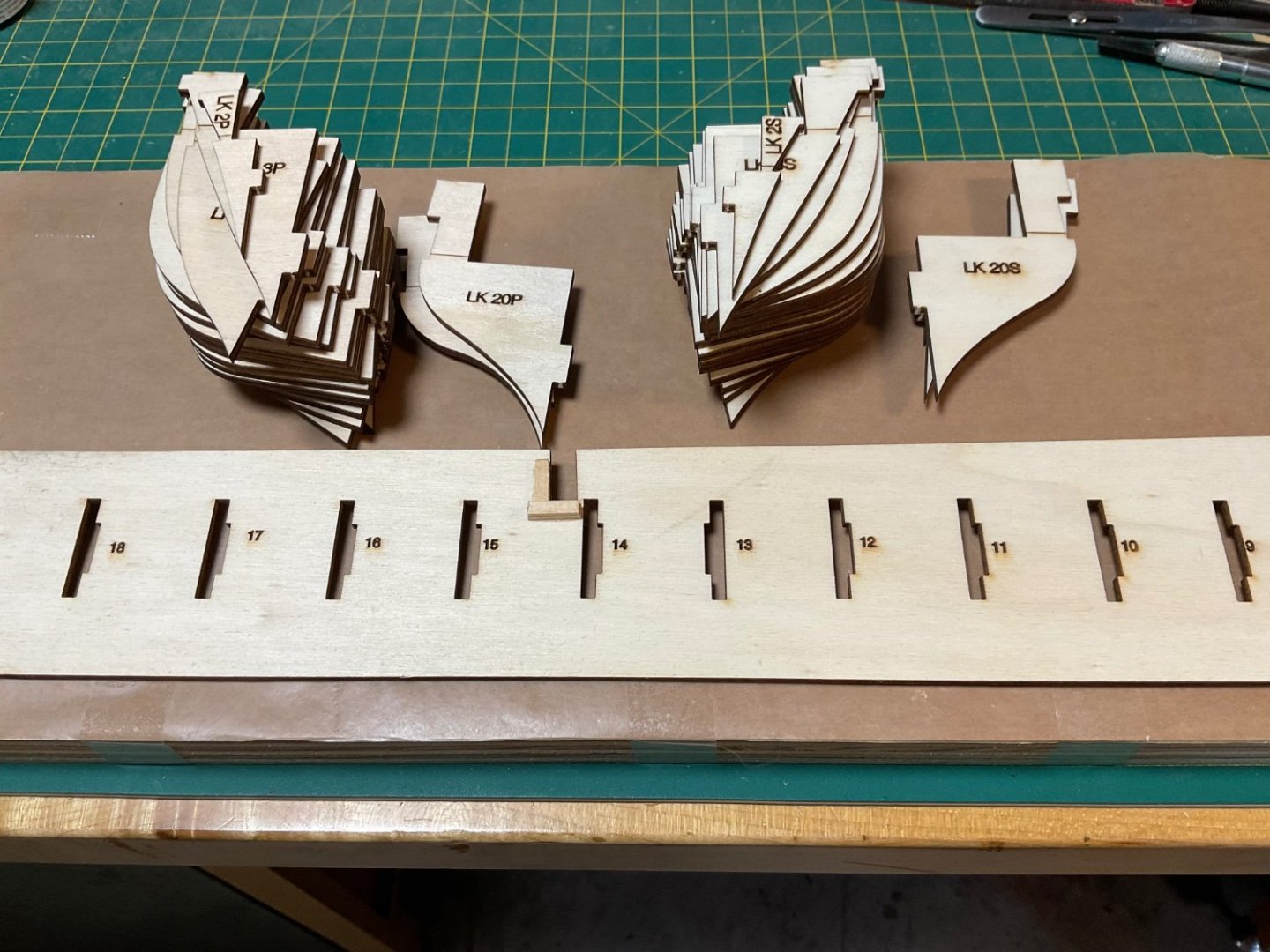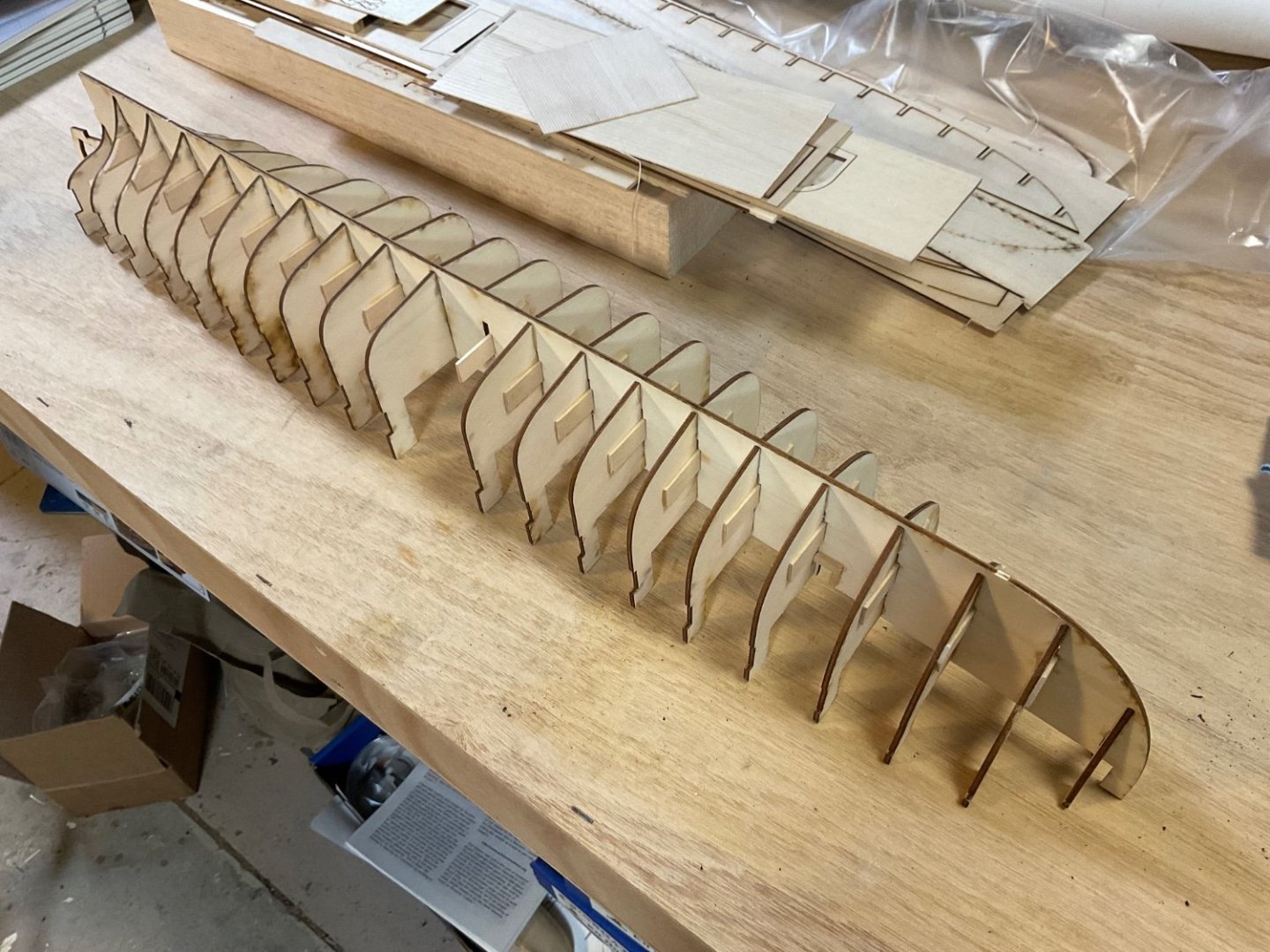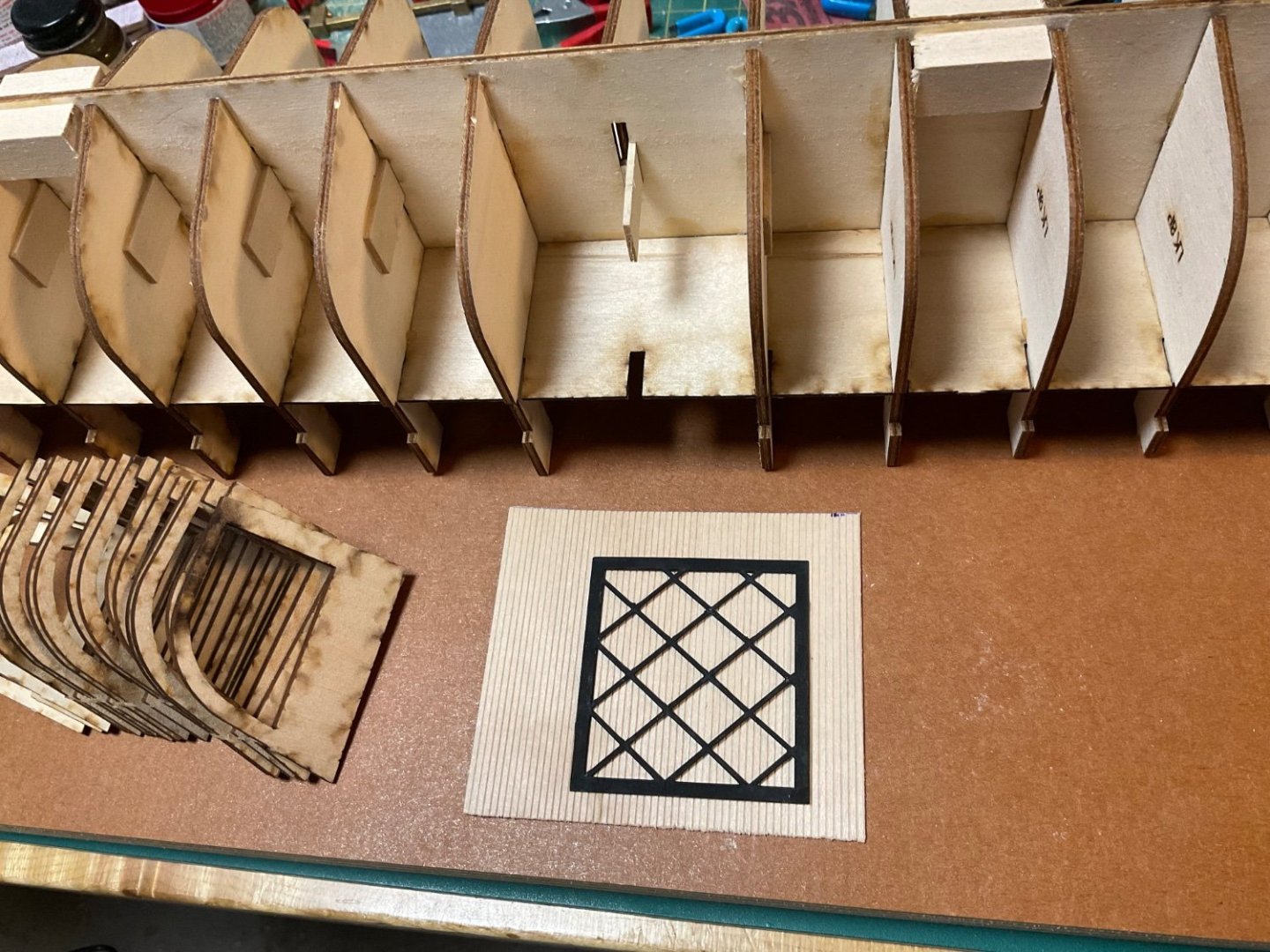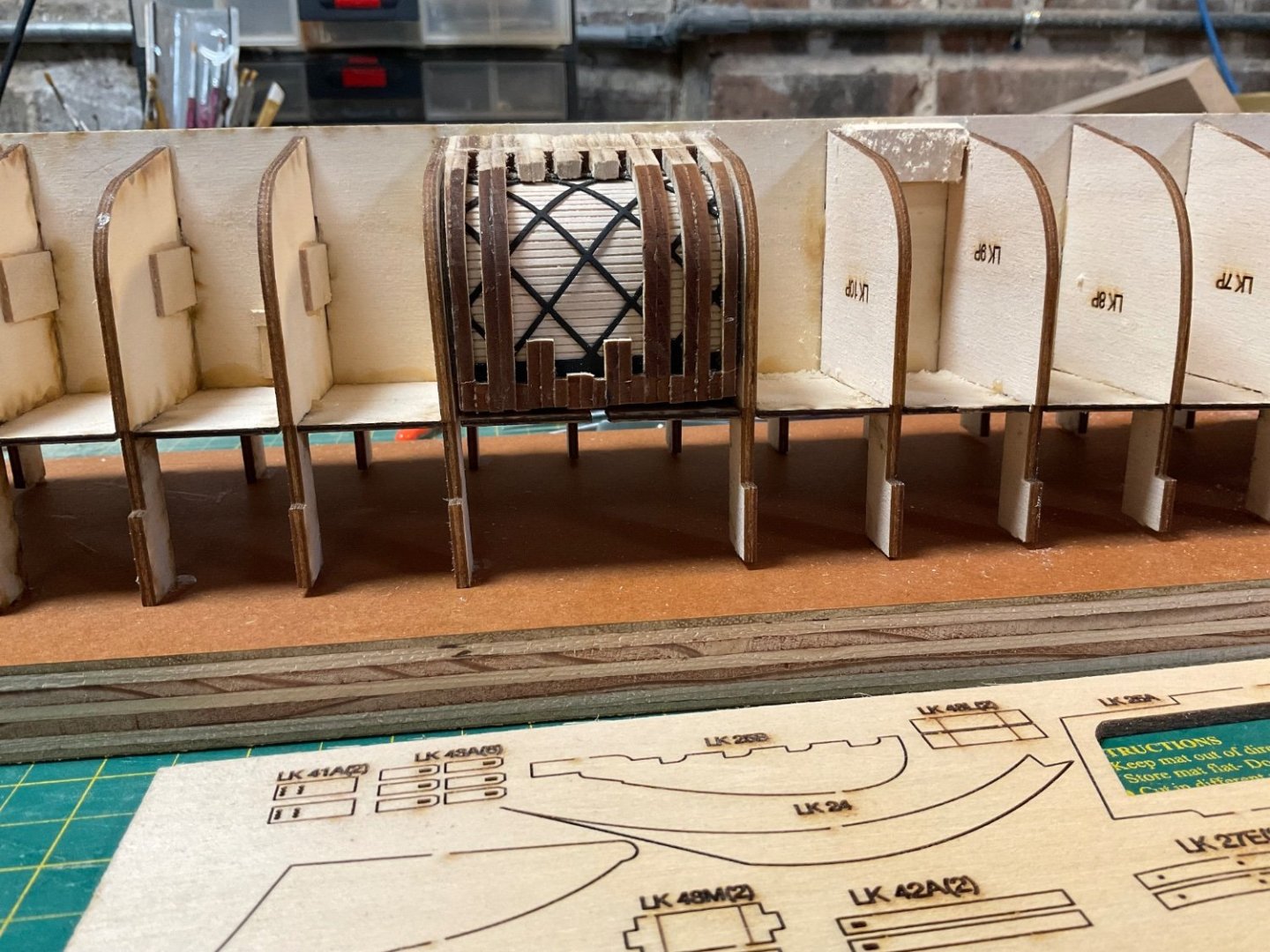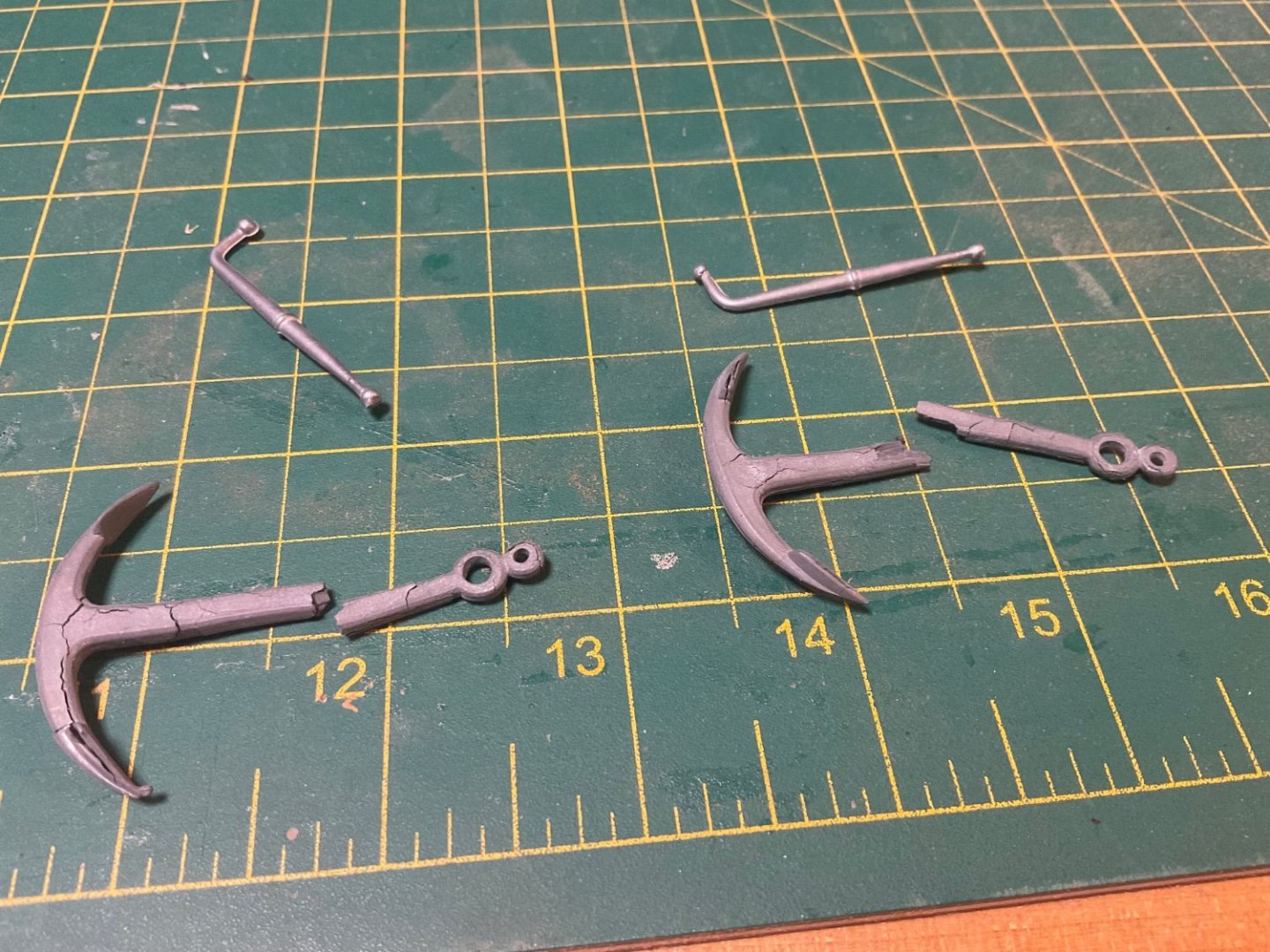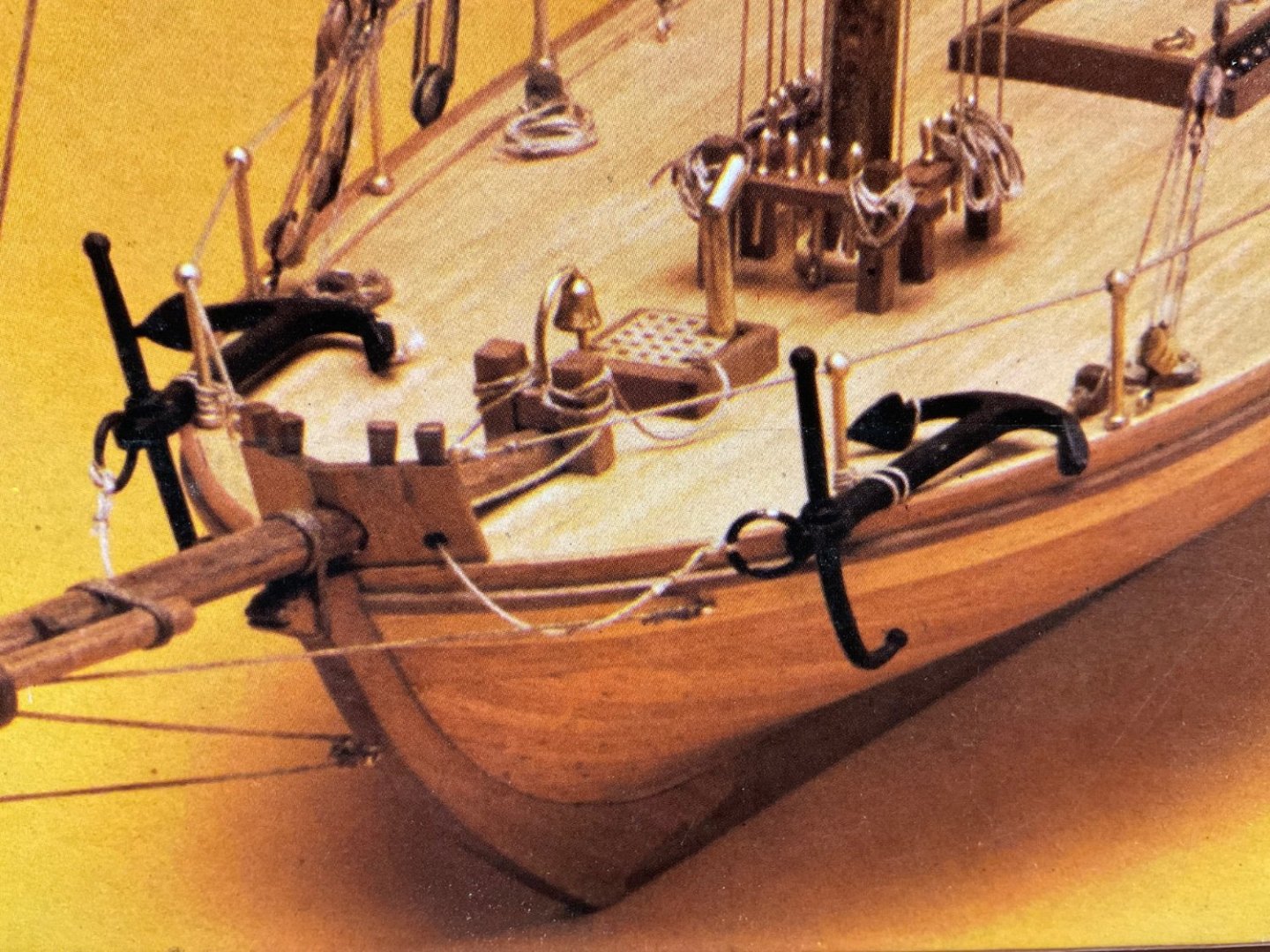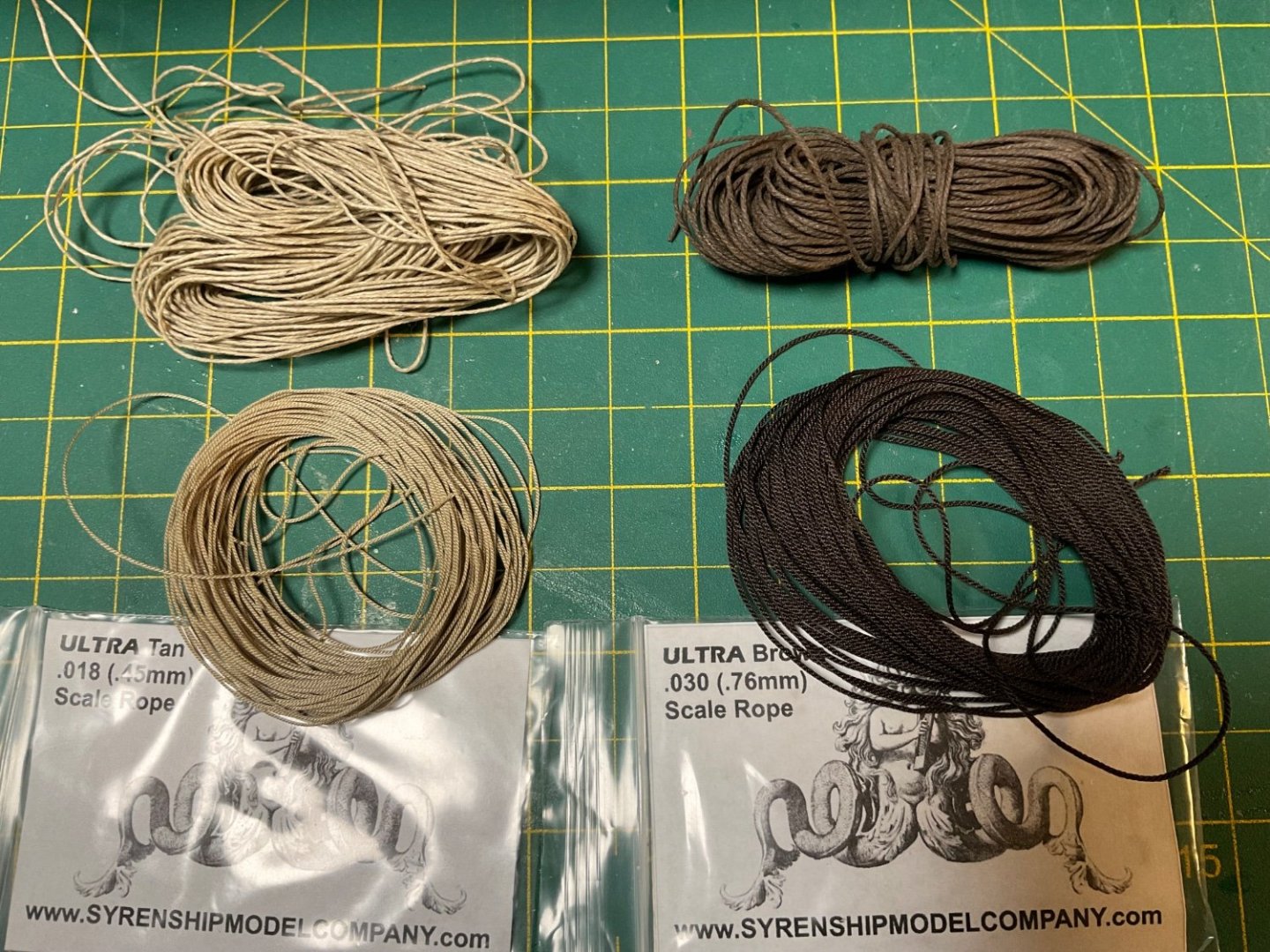-
Posts
45 -
Joined
-
Last visited
About SteveA

Profile Information
-
Location
Louisiana
Recent Profile Visitors
The recent visitors block is disabled and is not being shown to other users.
-
 Altduck reacted to a post in a topic:
Nonsuch 30 by SteveA - FINISHED - Model Shipways - 1:24 - catboat
Altduck reacted to a post in a topic:
Nonsuch 30 by SteveA - FINISHED - Model Shipways - 1:24 - catboat
-
I have an Occre Xebec kit started that I am building more or less out of the box. Longer term build is a scratch 1:48 Syren brig using Chuck’s excellent instructions. I have a pile of cherry scraps and cut offs from furniture builds that I plan to use, we’ll see how it goes…
- 27 replies
-
- Nonsuch
- Model Shipways
-
(and 1 more)
Tagged with:
-
 JpR62 reacted to a post in a topic:
Nonsuch 30 by SteveA - FINISHED - Model Shipways - 1:24 - catboat
JpR62 reacted to a post in a topic:
Nonsuch 30 by SteveA - FINISHED - Model Shipways - 1:24 - catboat
-
 JacquesCousteau reacted to a post in a topic:
Nonsuch 30 by SteveA - FINISHED - Model Shipways - 1:24 - catboat
JacquesCousteau reacted to a post in a topic:
Nonsuch 30 by SteveA - FINISHED - Model Shipways - 1:24 - catboat
-
 yvesvidal reacted to a post in a topic:
Nonsuch 30 by SteveA - FINISHED - Model Shipways - 1:24 - catboat
yvesvidal reacted to a post in a topic:
Nonsuch 30 by SteveA - FINISHED - Model Shipways - 1:24 - catboat
-
 yvesvidal reacted to a post in a topic:
Nonsuch 30 by SteveA - FINISHED - Model Shipways - 1:24 - catboat
yvesvidal reacted to a post in a topic:
Nonsuch 30 by SteveA - FINISHED - Model Shipways - 1:24 - catboat
-
 druxey reacted to a post in a topic:
Nonsuch 30 by SteveA - FINISHED - Model Shipways - 1:24 - catboat
druxey reacted to a post in a topic:
Nonsuch 30 by SteveA - FINISHED - Model Shipways - 1:24 - catboat
-
 ccoyle reacted to a post in a topic:
Nonsuch 30 by SteveA - FINISHED - Model Shipways - 1:24 - catboat
ccoyle reacted to a post in a topic:
Nonsuch 30 by SteveA - FINISHED - Model Shipways - 1:24 - catboat
-
 thibaultron reacted to a post in a topic:
Nonsuch 30 by SteveA - FINISHED - Model Shipways - 1:24 - catboat
thibaultron reacted to a post in a topic:
Nonsuch 30 by SteveA - FINISHED - Model Shipways - 1:24 - catboat
-
Yes! I completed the model a few months back. It is proudly sitting on the dining room mantle along with a few other David Antscherl designed kits. Thanks for asking, here are a few pics: Here is my collection in order of construction from left to right…
- 27 replies
-
- Nonsuch
- Model Shipways
-
(and 1 more)
Tagged with:
-
 druxey reacted to a post in a topic:
Nonsuch 30 by SteveA - FINISHED - Model Shipways - 1:24 - catboat
druxey reacted to a post in a topic:
Nonsuch 30 by SteveA - FINISHED - Model Shipways - 1:24 - catboat
-
 robert952 reacted to a post in a topic:
New builder here, understanding the different types of wood in your kit???
robert952 reacted to a post in a topic:
New builder here, understanding the different types of wood in your kit???
-
Just to clarify, when it says “Madera”, that just means wood in Spanish, it is a precut piece that you should be able to identify from the picture or drawing.
- 21 replies
-
I looked at the Corsair instructions on the Occre website and it only shows sapelli, lime/sycamore, and walnut being supplied with the kit, same as my Occre Xebec kit. Sapelli is the brown wood with porous grain, typically used as a top finish surface in planking. Lime/sycamore is the cream colored wood used for dowels, under layer planking and decking in my kit. The thicker hardwood pieces may be dyed walnut. My kit has walnut pieces, but they aren’t colored like that. Walnut is typically used for deck furnishings, etc…
- 21 replies
-
The 1836 brigantines Dolphin and Porpoise would make interesting model subjects. They were the last sub 100 foot two masters built for the U.S. navy and were considered excellent sailers, both having lengthy careers. Dolphin was burned at Norfolk in 1861. Porpoise took part in the 1853 Ringgold expedition, but was lost in the China Sea in 1854. At 1/4” scale, the hull would be around 22 inches between perps.
-
I’m starting a new build of the Civil War era USS Kearsarge as she appeared in the battle of Cherbourg on June 19, 1864, at least that is what Bluejacket was shooting for with this kit. Here are her specs from the Dictionary of American Naval Fighting Ships: Displacement: 1,550 tons Length: 201’ 4” Beam: 33’ 10” Draft: 14’ 3” Speed: 11 knots Complement: 163 Armament: two 11” Dahlgren, four 32-pdr., one 30-pdr. Dahlgren So far I’ve put together the bulkheads and sub deck, and glued it to the building board. I just started faring the hull for planking. This is my first Bluejacket kit and it looks like it will be a challenging build. They rank it as an advanced kit with previous building experience recommended. There appears to be a nice focus on detail as there are a lot of very tiny parts. I went ahead and ordered the optional copper plates, so this will be my first coppering attempt. The kit gives you the option of including a frame reveal section showing the iron cross bracing and chain armor, I will include this feature in my build.
- 1 reply
-
- kearsarge
- BlueJacket Shipcrafters
-
(and 1 more)
Tagged with:
-
Thanks! I appreciate the support and positive comments on this build. I’m in the home stretch now, with commencement of the rigging starting with the hanger and choker lines:
- 27 replies
-
- Nonsuch
- Model Shipways
-
(and 1 more)
Tagged with:
-
I really appreciate this discussion, very informative! So following the recommendations, I need to look for an iron folding anchor with a shank length around 50 mm. The anchor will be lashed to ring bolts added to the deck. I just received a used copy of The History of American Sailing Ships by Chapelle today. It does look like the AL Dallas kit was based on the 80-ton Doughty design shown in Figure 32. Chapelle speculated that the Dallas and her sister ship Surprise were of the 80 ton variety.
- 24 replies
-
- anchor handling
- schooner
-
(and 1 more)
Tagged with:
-
As it happens, I won’t be using the kit supplied anchors regardless of scale or period correctness. I just opened the bag they were in and they fell apart. I don’t know what they are made from, but it looks like the anchors would have eventually disintegrated even if installed when the kit was new. The carronade barrel was unusable as well. The kit box has a copyright date of 1978. Now I need to look for appropriate replacements for a revenue cutter circa 1815 around 1:50 scale.
- 24 replies
-
- anchor handling
- schooner
-
(and 1 more)
Tagged with:
-
I thought it odd as well to secure such a heavy object to a stanchion. Perhaps the anchor was secured to the knighthead and bowsprit bitts in some fashion?
- 24 replies
-
- anchor handling
- schooner
-
(and 1 more)
Tagged with:
-
I have an old Revenue Cutter kit that I work on occasionally, the AL Dallas kit now discontinued. Anyway, the instructions and plans make no mention about rigging the anchors. The only clue is from the picture on the box. It looks like the anchors are loosely secured around the Bowsprit Bitt and then through the grating. The anchor is also lashed to a railing stanchion and the fluke is secured to the Bowsprit Bitt. Does this seem like a reasonable way to rig the anchors?
- 24 replies
-
- anchor handling
- schooner
-
(and 1 more)
Tagged with:
-

USS Kearsarge deck planking
SteveA replied to SteveA's topic in Building, Framing, Planking and plating a ships hull and deck
Keith, thanks for providing the picture of the Tennessee deck, clearly showing the parallel decking. I plan to use the glued-up decking from Bluejacket as I have seen no evidence that tapered decks were used for ships of the Kearsarge period. There was a series of articles by Arthur C. Roberts on his Kearsarge model build in NRJ volumes 44 and 45. The pictures of his model show straight decking as well. -

USS Kearsarge deck planking
SteveA replied to SteveA's topic in Building, Framing, Planking and plating a ships hull and deck
Nic at Bluejacket said the weather decks should have been cut from glued-up decking and will be sending new parts to me. So it looks like I will be saved from having to lay down deck planks. -
 SteveA reacted to a post in a topic:
OcCre HMS Victory Limited edition
SteveA reacted to a post in a topic:
OcCre HMS Victory Limited edition
-
I received some replacement rigging from Syren. I ordered the closest in size I could get to the rigging provided in the model kit. I have to say I’m impressed with the quality of the Syren scale rope. I really like how sharp the details are and even the sheen on the rope. This will look a lot better than what came with the kit, especially the tan running rigging as can be seen in the comparison photo. The top rope is from the kit.
About us
Modelshipworld - Advancing Ship Modeling through Research
SSL Secured
Your security is important for us so this Website is SSL-Secured
NRG Mailing Address
Nautical Research Guild
237 South Lincoln Street
Westmont IL, 60559-1917
Model Ship World ® and the MSW logo are Registered Trademarks, and belong to the Nautical Research Guild (United States Patent and Trademark Office: No. 6,929,264 & No. 6,929,274, registered Dec. 20, 2022)
Helpful Links
About the NRG
If you enjoy building ship models that are historically accurate as well as beautiful, then The Nautical Research Guild (NRG) is just right for you.
The Guild is a non-profit educational organization whose mission is to “Advance Ship Modeling Through Research”. We provide support to our members in their efforts to raise the quality of their model ships.
The Nautical Research Guild has published our world-renowned quarterly magazine, The Nautical Research Journal, since 1955. The pages of the Journal are full of articles by accomplished ship modelers who show you how they create those exquisite details on their models, and by maritime historians who show you the correct details to build. The Journal is available in both print and digital editions. Go to the NRG web site (www.thenrg.org) to download a complimentary digital copy of the Journal. The NRG also publishes plan sets, books and compilations of back issues of the Journal and the former Ships in Scale and Model Ship Builder magazines.


